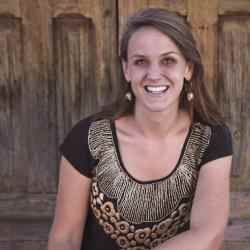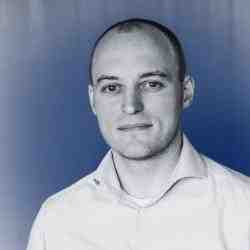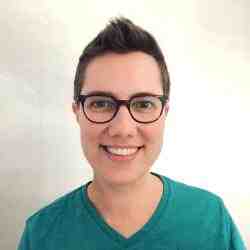Introduction
Mohammed is democratizing access to medical information and tools so that health care providers across the board are making the best possible decisions for their patients.
The New Idea
From his personal experience of having lost a patient due to incorrect triage, Mohammed, with co-founder Yaseen Khan, has designed a way to ensure that health care providers are guided by the most updated, relevant actionable insights, when a patient sits across from them. This dramatically reduces the possibility of human error at an individual level when it comes to both treatment and prescription recommendations.
Mohammed’s approach spans the value chain of medical care. Recognizing that the availability of medical information is fragmented, he works across the public and private sector in different countries and contexts towards creating open-access to essential medical information.
Mohammed and his team uses geo-located technology to ensure that health care providers are able to access this localized and contextually relevant information through their phones, computers and attached hospitals. This information spans practical knowledge around essential medicines, and treatment guidelines, as well as constantly updated information around stock outages, adverse drug reactions and outbreaks. Emguidance has developed an array of tools as well, which allows a healthcare worker to immediately calculate medical dosages, or the triage score, based on the patient in front of her. This equips the healthcare worker to diagnose and prescribe according to her local reality. Patients, especially those in rural and remote areas, are thus able to avail the best treatment possible.
EMGuidance has the potential to distill patterns from the ground. Health care providers interact with, and share feedback on the content and tools available, through which it can emerge locally relevant data, including data on drug resistance patterns as well as adverse drug reactions. This is relayed back to policy makers, to aid them in building robust, locally relevant policies and treatment guidelines.
The Problem
The health care system across Sub-Saharan Africa is characterised by a deep deficit of health care workers, due to the inadequacy of the region’s current healthcare education system. With only 170 medical schools serving the 47 countries of Sub-Saharan Africa, there is a deficit of an estimated 1.8 million health workers across the region, projected to rise to 4.3 million by 2035. On top of this, there is significant disparity between urban and rural areas – and those health care workers who do serve rural communities often see situations where facilities can be short-staffed, with poor continuing-education training. This often means that health care providers struggle with access to latest information and research, new drugs, as well as new treatment guidelines and protocols, recommended by tertiary and national health institutes. For instance, in South Africa alone, despite a general sense of confidence in the proficiency of South African public sector doctors, research indicates very poor adherence to standardized treatment recommendations, sometime as low as 20% in major conditions such as hypertension.
This is because health care providers do not often have access to the most-updated treatment guidelines and medicines information that they need to have to offer their patients the best care. Although most country health care departments and individual health care institutions adapt internationally accepted guidelines to create locally applicable protocols, they often resort to paper-based dissemination or individual web-site based publishing. A healthcare provider thus either needs multiple sources of physical references, or has to search multiple websites to find what they need. Many resort to Google, where they find internationally authored content, which rarely speaks to local context. These are often also behind pay-walls, and thus not freely available for the provider to access. For those institutions that produce their own guidelines, they have to confront the lack of feedback loops, on how medical providers use this knowledge, and whether there are adverse reactions to the protocols recommended. This widens the disconnect between them and the practitioner.
While this impacts the health care providers ability to provide immediate up-to-date patient care, a deeper manifestation of this disconnect results in medical error. While data from across the continent is sparse, John Hopkins Hospital reported that diagnosis errors cause up to 160,000 deaths annually in South Africa. Globally, the WHO reports 1 death a day because of medical errors. Errors in medication dosage, health management, treatment and aftercare, have also contributed to this death toll.
The Strategy
Mohammed encountered this specific issue, as a junior doctor with Medecins Sans Frontiers (MSF). Stationed in a remote clinic in Northern Pakistan, on a long shift, he discovered an unattended patient in the emergency room. He immediately knew it was too late for her. Later, he discovered that she had been incorrectly triaged, and if she had been seen earlier, she could have left the hospital still alive. This early experience, made him realize how vulnerable healthcare providers were to making mistakes, and how easily this mistake could have been prevented if he had access to the right guidelines at the right time. He developed a paper-based triage algorithm (based on the South African Triage Scale) within MSF to prevent future mistakes, and this was so effective it got adopted across their global operations.
Returning to South Africa, he saw similarly burdened emergency rooms in the country, and started exploring how it would be best possible to share his paper-based triage solution with local health care providers outside of MSF. However, he had also experienced how difficult it is for a practitioner to wade through numerous journals and books for information, when there was a patient in need in front of him. He wondered if there could be a digital solution, and together with his co-founder Yaseen Khan, created a mobile version of his triage tool, which they piloted with the Western Cape Department of Health. The mobile triage tool was evaluated, and found to have decreased triage error by 88% in under-resourced emergency rooms, along with reduced waiting time for patients.
Mohammed began to see the efficacy of providing open-access, point-of-care insights for healthcare providers, towards enabling every kind of healthcare provider to provide localised, custom care based on the patient in front of them. Beginning 2014, he started partnering with a range of different institutions, in different parts of the world, towards creating open access to information through mobile technology. He built 6 different applications, across different disease areas including Primary Health Care, HIV and Tuberculosis, in collaboration with The South Africa National Health Department, Medical Research Council of South Africa and Metropolitan Health; Ebola guidelines with Medecins Sans Frontiers in Sierra Leone; the triage app with the Western Cape Department of Health; and Emergency Medicines Guidance to address the needs of Emergency Medicine doctors and nurses to access low-resource appropriate emergency medicine guidelines, procedure instructions and drug information. Through these partnerships, Mohammed was able to reach over 50,000 health care providers in South Africa and beyond, all actively using the 6 applications.
From developing different individual applications, Mohammed and his team then decided to integrate and coalesce the technology, partners and content into one open-access platform, suited for all kinds of health care providers to use in any kind of context, which he launched mid-2016.
Mohammed decided that the platform must be truly comprehensive, and is able to support doctors, nurses, pharmacists, junior doctors, and para-health professionals in every kind of context, be it urban, rural, high or low resourced. Towards this, he first reaches out to country and individual institutional health care providers like universities, health societies and National and Provincial Departments of Health, to convince them to publish their guidelines, treatment protocol and research on his platform. Further, with his in-house medicines team, he publishes specific information about every drug in South Africa. The information is carefully vetted with groups of specialists, and health care providers themselves. He links this information with easy-to-use tools such as dosage calculations, based on algorithms calibrated to local realities - including race, age, body type etc. This enables all kinds of health care providers to make accurate decisions for their patients.
He then reaches out to healthcare providers to equip them with both the website and mobile version of the platform. He started doing this mostly through word of mouth, onboarding health care providers based on their medical registration details. However, seeing the need to be more intentional in his outreach, he has begun to go through universities, to onboard pre-service health care workers, as well directly now, onboarding full hospitals. When he on-boards a hospital, he not only publishes the call-rosters, enabling healthcare providers to quickly assess their referral options, but has also introduced a newsroom, allowing knowledge exchange over critical issues including stock outages, and infrastructure availability. This easing of process has a direct impact on patient waiting times, by ensuring that they are diagnosed according to the local realities. From when the platform was launched, in 2016, he has amassed a community of 13,000 active health care providers, 10000 of whom are in South Africa, 3000 in other African countries. Tertiary universities including the University of Stellenbosch prescribe this platform to all their medical students, even as some of the biggest hospitals in South Africa have signed up, including Chris Hani Baragwanath Hospital, the largest in the Southern Hemisphere.
In due course, Mohammed sees the potential of the platform to emerge critical localised trends including resistance patterns, adverse drug reactions and outbreaks. Communicating this to local health authorities will enable further refinement of recommended treatment protocol, embedded in localised data. He is already tracking this by assessing the information accessed by the health care community, and deriving trends based on searches and time of access. Towards refining his ability to predict better, he envisions tools like digital scripts and functionalities to report outbreaks directly to the relevant authority as important additions to the platform, which he will roll out at the end of 2018.
Mohammed holds himself and his team completely accountable to the principal of open-access when it comes to critical knowledge and insights, which could ultimately save countless lives. Towards ensuring that the community will never have to pay for this knowledge, Mohammed has started partnering with private sector companies, including pharmaceutical companies. He engages with them at a strategic level, towards unlocking revenue streams through value-led relationships. Pharmaceutical companies can ‘sponsor’ value-driven content around any of the products and schemes they offer to health care providers and institutions. This includes how-to content aimed at patients, that they can be shown towards assisting them to administer their own dosages at home; research and data that they would want to share as well as publicising gatherings and convenings aimed at health care providers. Governed by a very clear editorial policy that ensures that the platform remains academically neutral, this also offers the opportunity for healthcare providers to make an informed decision to engage with different pharmaceuticals in the way they wish to.
As the platform stabilizes, Mohammed has already started assessing its scope and viability in other African nations. While he is focused on South Africa, the platform has started publishing treatment protocols and guidelines from 8 other African countries, including Kenya, Tanzania, Ghana, and Sierra Leone. However, he is exploring different approaches towards scaling his full service offering - through both a hub model, as well as a social franchisee approach. He is considering using the hub model, where operations will be centralised, with Southern Africa, and the franchisee model in other, further away geographies, and will pilot this with an expansion to Namibia by the end of 2018.
The Person
Although Mohammed’s current journey began with his experience in Northern Pakistan, his early years played an important role in setting him up as a doctor-entrepreneur, to improve his community of practitioners. Growing up in South Africa, he was the first non-white student in a white school, enabling him to understand and work with diversity from a young age. From his high school years he began to experiment with integrating disciplines. For a science olympiad he integrated his passion for medicine, with his passion for bicycling, by building a blood pressure cup with a cycle tube, to increase blood flow in the lower limbs, for those patients in bed-rest, and/or wheelchairs. He won a prize for this, allowing him to see the value in thinking outside of boxes.
Later, as a student intern, he understood the dynamics of working in hospitals, where the interactions between junior and senior healthcare workers was minimal, or strictly restricted to instructions. However, even at that time he knew that in the spaces he wanted to work, like rural South Africa, he would not have access to their knowledge. He found a way to get to know them, and found himself teachers who could equip him for work in low resourced environments.
These two skills came of use, when he was doing his training at a rural hospital in Kwa-Zulu Natal, while he was operating in that very low resource context he wanted to be in. He would see a lot of burn victims at that time, who would have to wait for the specialist, who would only come once a week. This would not only cause them loss of work days, but they would have to find transport to come back to the hospital, not only an inconvenience, but a big expense. Mohammed saw this issue, and developed a vacuum dressing machine, that allowed him to provide better relief for these patients. It was at this time he met a doctor from Medecins Sans Frontiers, who saw his innovation and invited him to join up, setting him on the path to developing first The Open Medicine Project (TOMPSA) and then Emguidance, with his friend and co-founder Yaseen Khan.
Mohammed is constantly driven by these early experiences. In 2015, Before TOMPSA evolved, Mohammed and Yaseen had the opportunity to dramatically scale their idea, with a promised grant from the government. 8 months later, the grant never materialised, due to a change in strategy. Mohammed had used all his savings , and Yaseen had sold his house, to support them through that transition. At this point, they both wanted to give up, and return to practice as medical professionals, for their personal sustainability. However, Mohammed and Yaseen was unsatisfied. He knew they hadn’t made the impact he had wanted, and he knew he didn’t want to give up just yet. After going back to the drawing board, they decided to focus on evolving the platform, focus on the potential impact on the healthcare providers, and knew that sustainability will follow. He hasn’t looked back since.

 Tile image
Tile image


